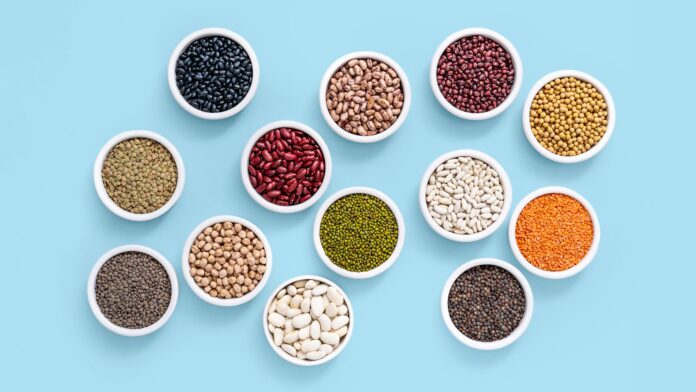If you’re looking for an alternative to meat to get your required servings of protein, beans are a great, nutrient-packed choice. But — as anyone who’s ever eaten a burrito knows — there’s one downside to eating beans: They can make you gassy.
Fortunately, there are ways to enjoy beans while preventing their unfortunate side effects.
Bean Basics
Beans are the mature seeds of plants known as legumes, according to the Grains & Legumes Nutrition Council. Beans are high in protein, versatile, and relatively inexpensive, making them a staple ingredient around the world. Beans are also rich in B vitamins, iron, magnesium, potassium, and vitamin E, according to the U.S. Department of Agriculture (USDA).
Beans come in a variety of shapes, sizes, and colors for use in an array of dishes. According to the U.S. Dry Bean Council, pinto beans are the most popular bean in the United States. Other common types of beans include:
- Lima beans
- Black beans
- Black-eyed peas
- Soybeans
- Kidney beans
- Garbanzo beans (chickpeas)
- Navy beans
- Red beans
- Fava beans
- Lentils
You can enjoy all types of beans in dry, canned, and frozen forms.
Beans and Gassiness
Passing gas is normal and a byproduct of healthy digestion. Mayo Clinic says most people pass gas up to 20 times a day. Beans, with their high fiber content, are known for causing bloating and flatulence.
According to Cleveland Clinic, beans also contain raffinose, a type of carbohydrate that is difficult to digest. While research has indicated that raffinose has beneficial effects on gut bacteria, it produces intestinal gas when it’s broken down.
How to Turn Off the Gas
Although there are no specific beans that don’t cause gas, not all types of legumes increase gas equally.
According to Harvard Health Publishing, beans that tend to be the biggest offenders when it comes to gas production include:
- Pinto
- Navy
- Lima
- Whole soybeans
Adzuki beans, lentils, and black-eyed, pigeon, and split peas tend to cause less gas.
Everyone reacts differently to each type of bean — so if one type of bean bothers you, try a different one.
Consider some of these tips from Harvard Health Publishing to make beans easier to digest:
- Presoak them: By soaking dry beans for 12 to 24 hours and discarding the soaking water, you can reduce their gas-producing potential. The longer beans soak, the more effective this will be. Use fresh, clean cooking water. Rinse canned beans before eating.
- Take an enzyme: To break down some of the gas-producing oligosaccharides, you can take an enzyme called alpha-galactosidase before eating beans. Over-the-counter products such as Beano, Bean Relief, and Bean-zyme can help improve digestion of beans.
- Start small: By starting out slowly and keeping your portions small, you can let your body get accustomed to the fiber and oligosaccharides in beans. Gradually increase your intake by eating beans more frequently or consuming larger servings. When you eat beans regularly, you may find they produce less flatulence over time.
- Chew them well: Chewing beans thoroughly before swallowing them exposes them to the digestive enzymes in your saliva, which do some of the work before they hit your stomach.

